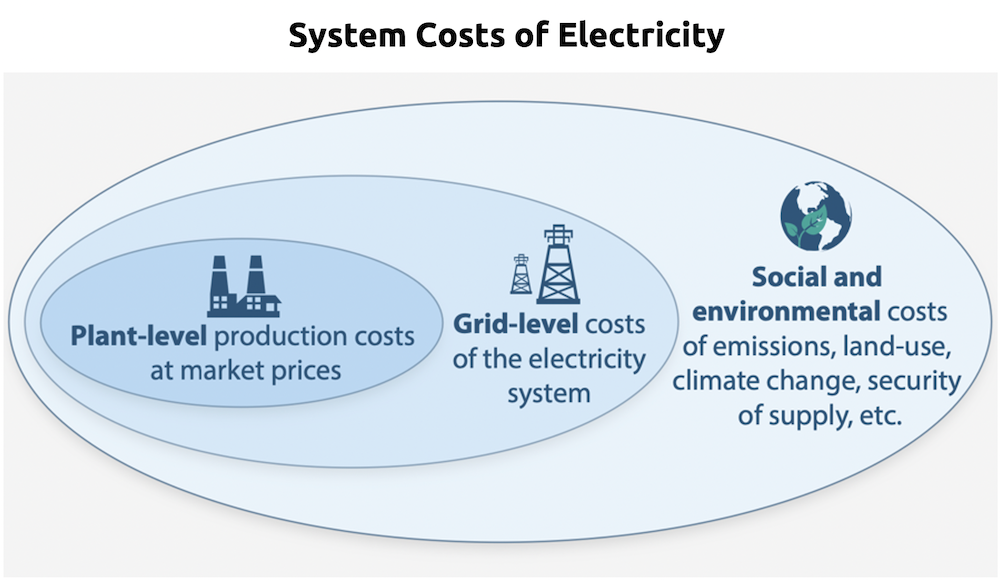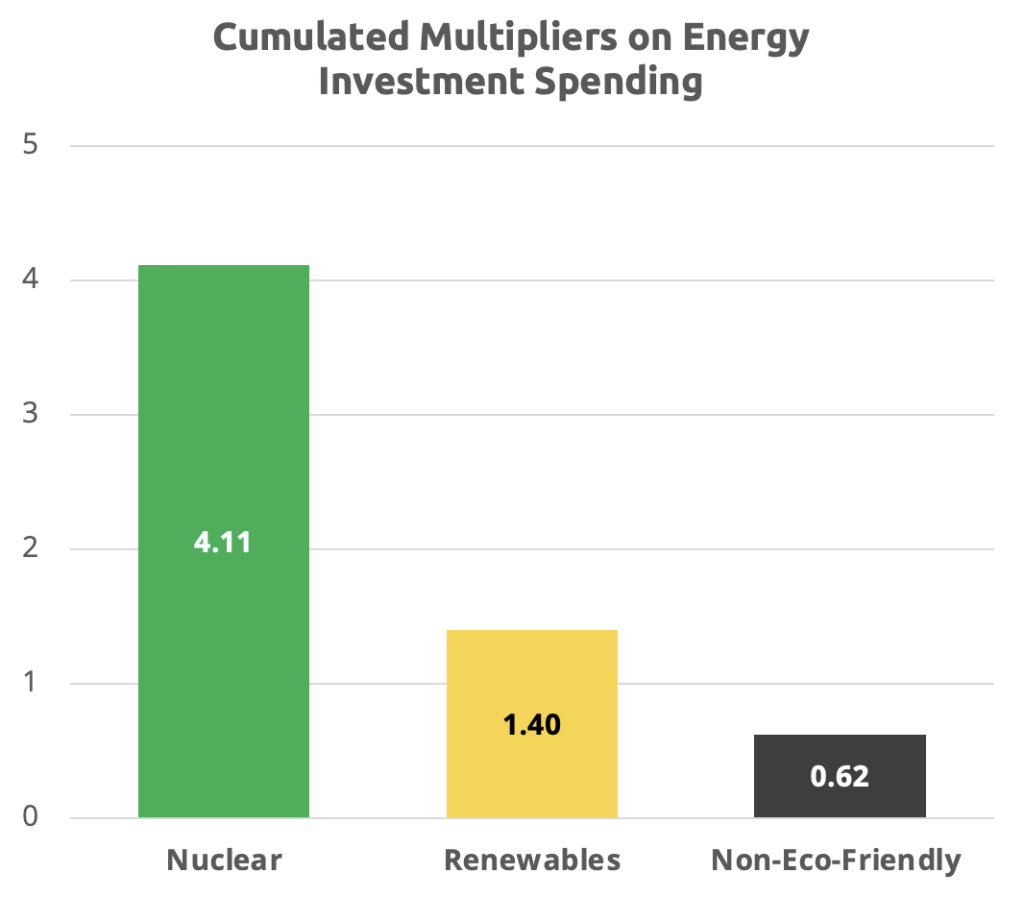As a growing society concerned about our environment, we demand rapid progress on zero-emission energy. Already a major source of carbon-free electricity in 32 countries, nuclear power is a proven, scalable tool with the largest economic multiplier. About 30 countries are considering, planning, or expanding this proven means to ensure domestic energy security, reduce greenhouse emissions, and improve people’s lives.
Advanced industrial democracies like France, the U.K., and Japan are fast reversing their nuclear phaseout policies. In the U.S., the Bipartisan Infrastructure Bill of 2021 and the Inflation Reduction Act of 2022 are allocating $40 billion into the nuclear power sector over the coming decade. The Nuclear Energy Innovation and Modernization Act of 2019 has mandated the Nuclear Regulatory Commission to reform the U.S. regulatory framework to comply with risk-informed, performance-based measures. This tectonic shift in the policy landscape marks the beginning of a new era for nuclear energy.

Comprehensive lifecycle emissions of electricity generation sources by the United Nations ECE show nuclear, wind, and solar to have the lowest impact. Other such studies by the Intergovernmental Panel on Climate Change, Our World in Data corroborate these findings.
Industrial energy facilities’ land footprint is proportional to habitat destruction and biodiversity loss. As the most land-sparing energy technology, nuclear allows for nature conservation and rewilding. Rooftop solar has minimal incremental land footprint at the point of installation. While Onshore Wind’s direct impact (turbine base) is minimal, the usability of the space between turbines is degraded.


After six decades of civilian nuclear generation, 440 reactors now operate in 32 countries worldwide. Measured in deaths per unit electricity generated, nuclear has proven itself to be as safe as solar and wind. According to extensive UN research, there has been only one accident at a nuclear power plant resulting in fatalities from radiation. This was a reactor in the former Soviet Union which lacked a containment building and other basic features of plants in the US and elsewhere in the world. Civilian nuclear waste has never resulted in any deaths.
Nuclear waste products are compact and contained. Today, spent fuel is safely stored in secure concrete casks. In the future, it could be recycled as fuel in advanced reactors or stored permanently underground. In the entire history of commercial nuclear power, nobody has ever died from spent nuclear fuel, yet fossil fuel waste (air pollution) contributes to millions of deaths annually.


To understand the costs of electricity provision requires systems level thinking. The combination of plant-level costs, grid-level systems costs, plus full social & environmental costs creates a framework that allows us to compare the costs of different generating options.
Firm resources — generators able to provide on-demand power regardless of the time of day or weather — like nuclear & hydro do not need extensive storage, transmission, and (fossil) backup generation to ensure system reliability.
Arbitrarily limiting generation technologies to intermittent sources raises system-level raise costs. System-level costs increase exponentially at high penetration of intermittent sources like solar & wind.


Nuclear power offers differentiated value proposition along six dimensions today. Furthermore, programmatic deployment and learning can make nuclear cost-competitive with fossil combustion.

Lifecycle material use by technology also show nuclear to be the lowest resource-intensive energy source.
Fossil sources require vast amount of material fuel per unit of energy generation, while fuel-less energy systems like wind and solar use none.
The uranium required to make electricity from nuclear power amounts to 22 grams per megawatt-hour.
Differences in materials, labor, and manufacturing requirements between nuclear, wind, and solar create dramatically different supply chains. With such large investments needed to transform our energy system, we must aim to capture as much of the investment as possible in domestic supply chains, and ensure that these new power sources create permanent, highly-skilled, well-paying jobs with opportunities for women and minorities.


Nuclear energy is a rare strategic sector that remains almost totally onshore. With largely domestic supply chains and a STEM workforce, nuclear has the largest economic multiplier effect of any energy technology. Nuclear power creates quality, well-paying union jobs for people and tax revenue for communities.


Nuclear generations operate at 90-95% capacity factor 24 hours and 365 days, underpinning reliability.
Chart capacity shows the rooftop solar capacity factor in New York State.
Only a quarter of anthropocentric greenhouse gasses are from the electricity sector. Decarbonizing industrial processes, building heating and cooling, and all transportation is a much larger and harder task. While a portion of these sectors can be electrified (e.g. electric vehicles, heat pumps), some cannot (e.g. steel-making, aviation).
Beyond the electric sector, civilian nuclear technology can efficiently provide direct heat for industrial processes, produce low-carbon liquid fuels to decarbonize transportation, and power negative emissions technologies.


Nuclear is an evidence-based pathway for rapid deep decarbonization. Real-world evidence shows that nuclear is the only technology to have ever scaled up fast enough to counter climate change except hydropower. Today, most of the world’s hydro resources are tapped out.
Repeated deployment of the same design makes nuclear-heavy grids some of the cheapest on the planet. Governments around the world are creating conducive environments for the deployment of nuclear power.
References
- United Nations ECE. Life Cycle Assessment of Electricity Generation Options. March 2022
- Our World in Data. What are the safest and cleanest sources of energy?
- U.S. Department of Energy. Pathways to Commercial Liftoff: Advanced Nuclear. September 2024
- U.S. Department of Energy. Energy & Employment Jobs Report
- OECD-NEA. Meeting Climate Change Targets: The Role of Nuclear Energy. 2022
- Denholm et al. The challenges of achieving a 100% renewable electricity system in the United States. 2021
- New York Independent System Operator. Gold Book
- Our World in Data. Emissions by Sector
- International Monetary Fund. Building Back Better: How Big Are Green Spending Multipliers? 2021
- U.S. Department of Energy. U.S. Energy & Employment Jobs Report (USEER)
